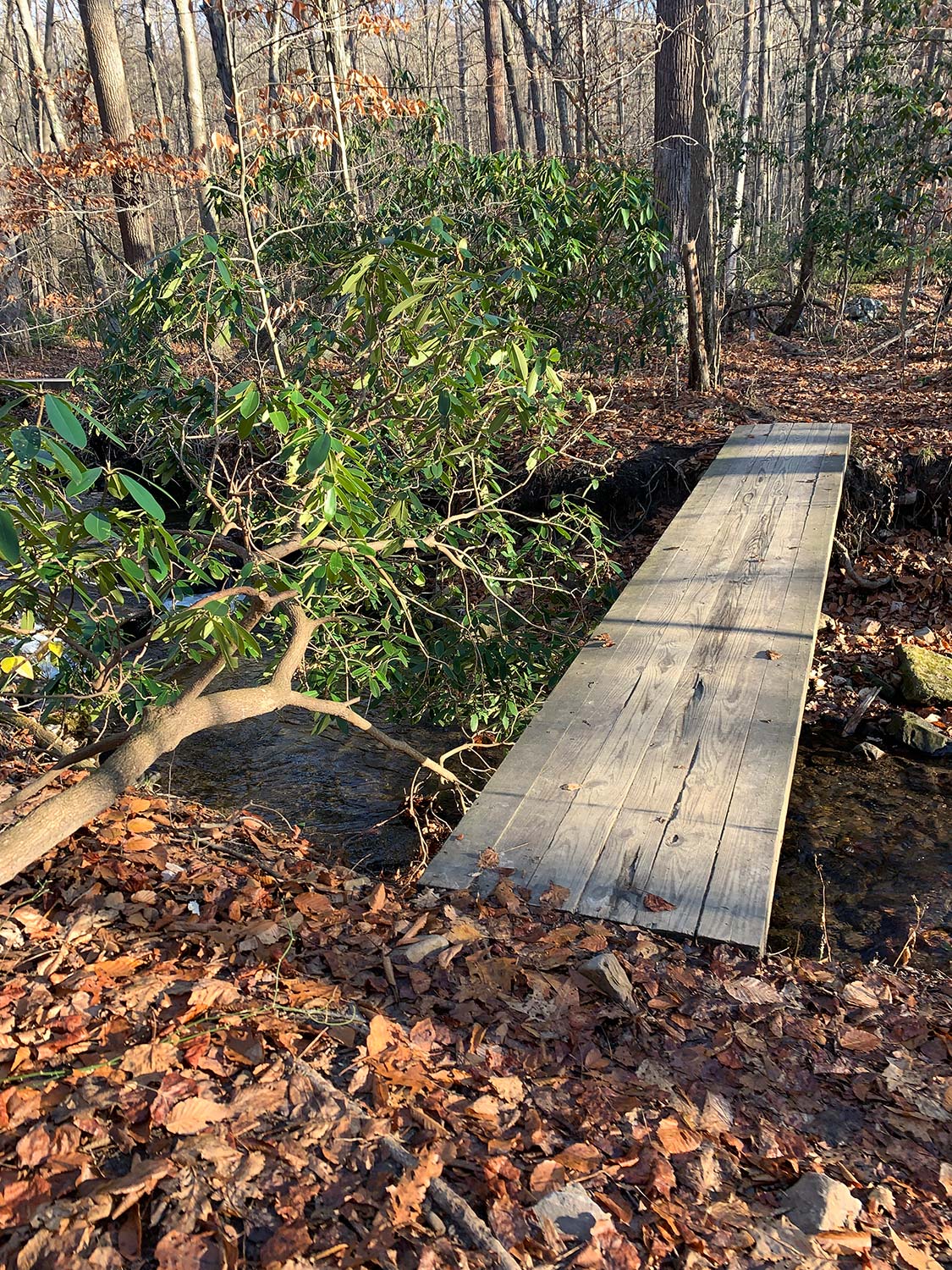
I remember the first time I saw the largest Rhododendron Maximum tree. I had recently moved back to Pennsylvania, and I was driving on 422 towards my parents’ house when I looked to the left and did a double-take! An enormous Rhododendron, in bloom, at least 40 feet across and 20 feet high was in full bloom. And, it was dwarfing the house it was growing next to. After doing a little local research, I learned about how famous this rhododendron has been in our region. Ever since then, each time I pass, the Rhododendron and I exchange a little greeting.
As someone who lives in the Allegheny Mountains, Rhododendron has a special place in my heart. It is one of the dominant understory trees (and yes, it often is the size of trees here!), growing both in deciduous and conifer (Hemlock) forests, encrusting rivers, and streams, and adding so much beauty to our land. Often confused with Mountain Laurel (see this PDF for some differences), Rhododendron is part of the Laurel-Azalea-Rhododendron group of plants in the Heather family (Ericaceae). Rhododendrons can be found throughout the world and have some key distinguishing features. I’m focusing my attention today on the Rhododendron Maximum species, which is also known as Great Laurel, Great Rhododendron, Rosebay Rhododendron, American Rhododendron, Bayis, Late Rhododendron, or Big Rhododendron. If you don’t have Rhododendron Maximum, you can substitute any number of other Ericaceae species such as Mountain Laurel, another Rhododendron variety (including ornamental), or Azaela. Many people have these shrubs growing already as ornamentals in their yards or local towns if they don’t have them in the wild, making this a good plant to work with not only for those in the Appalachian mountains but those in suburban and urban areas.
This post is part of my Sacred Trees in the Americas series. In this series, I explore the magic, mythology, herbal, cultural, and divination uses, with the goal of eventually producing a larger work that explores many of our unique trees located on the US East Coast. Other trees in this series include Witch Hazel, Staghorn Sumac, Chestnut, Cherry, Juniper, Birch, Elder, Walnut, Eastern White Cedar, Hemlock, Sugar Maple, Hawthorn, Hickory, Beech, Ash, White Pine, Black Locust, and Oak. For information on how to work with trees spiritually, you can see my Druid Tree Working series including finding the face of the tree, communicating on the outer planes, communicating on the inner planes, establishing deep connections with trees, working with urban trees, tree energy, seasonal workings, and helping tree spirits pass.
Ecology and Growth
The Great Rhododendron grows within most of the Appalachian Mountains, although the dominance and size can vary greatly. It spans from eastern Georgia to Nova Scotia, and I will say, it is particularly dominant and amazing here in the Allegheny mounts of Western Pennsylvania. Here, you can see it as a small shrub, 8-10 feet high, and up to enormous sizes. Rhododendrons can grow to 25 or 30 feet tall, twisting, beautiful, and magical. Their waxy simple leaves are evergreen, offering color and vibrancy year-round. In June, they bloom with beautiful pink clusters of trumpet-like flowers that provide a fantastic nectar source for bees, moths, wasps, and hummingbirds. This is why they are planted so widely as an ornamental–because they are truly stunning.
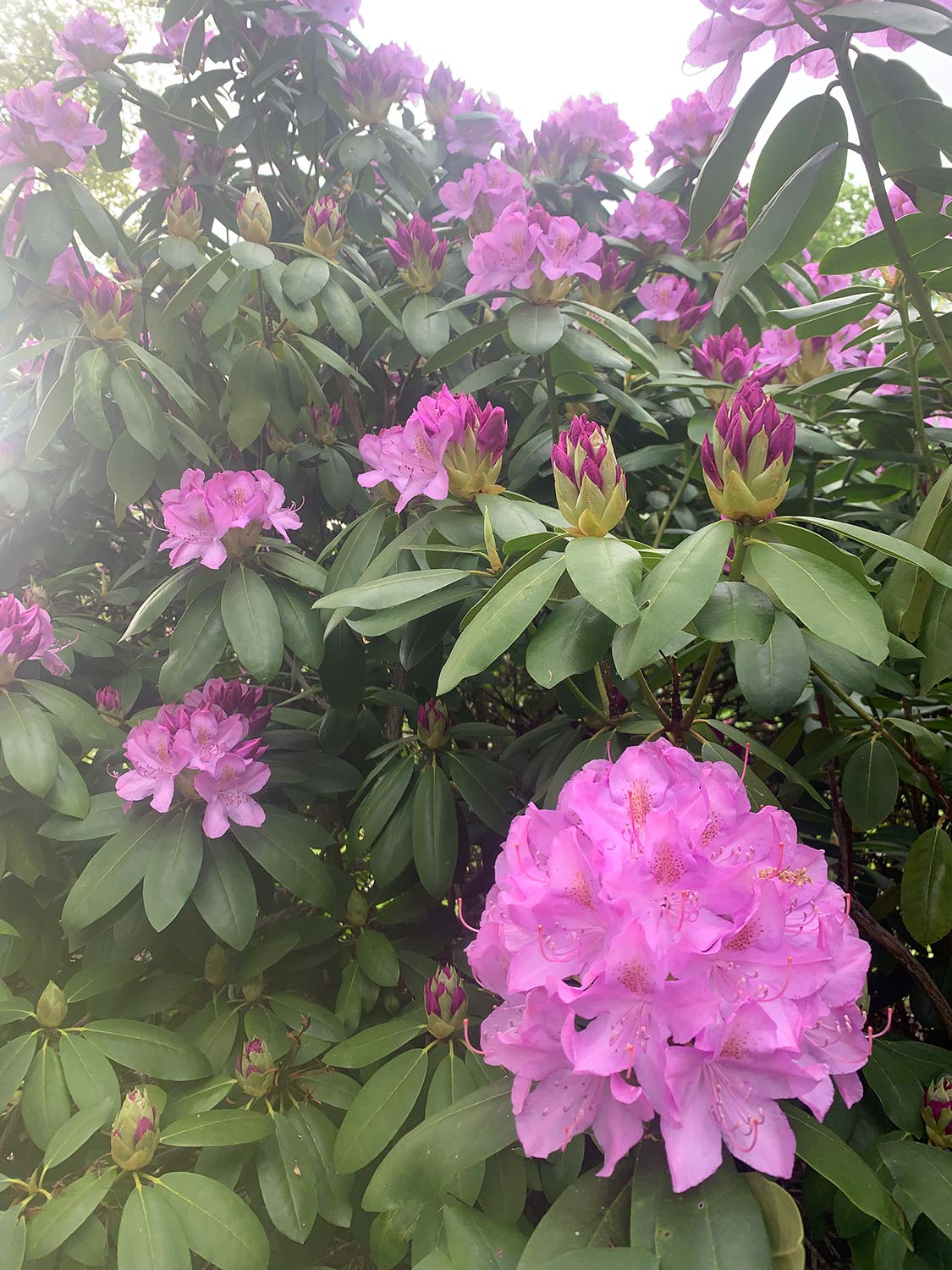
The leaves on the Rhododendron appear almost tropical. They vary from 3″ to over 8″ in length on older branches. They grow in a spiral pattern starting at the top of the branch and spiral down the branch, demonstrating the sacred geometry present in this lovely tree. Like other conifers, Rhododendron will drop and regrow a small number of leaves each year but stay green year-round.
In the wintertime, when the temperatures drop well below freezing, the rhododendron drops its leaves straight down and curls them up so that they look like long tubes. This prevents the leaves from suffering cold damage. As soon as the temperatures warm up, the rhododendron unfolds its leaves and spreads them to the winter sun. This shows incredible resilience and adaptability. One of the ways the hillbillies here in Western PA know it is “damn cold out” is by looking at the Rhododendron leaves!
Rhododendrons particularly like to grow along the edges of streams and are found in both deciduous oak-hickory overstory forests and also in Hemlock/white pine forests. It particularly enjoys wet areas, so you can often find it along riparian zones (particularly on the edges of smaller and medium-sized streams) and also in places where we have rocky outcrops, ravines, and hidden springs. Rhododendrons are usually kept in check by a thick overstory. There are cases where logging or other disruption of the overstory will allow the rhododendrons to spread for acres and acres–I once hiked through a few miles of one such situation in New England and it was quite an experience.
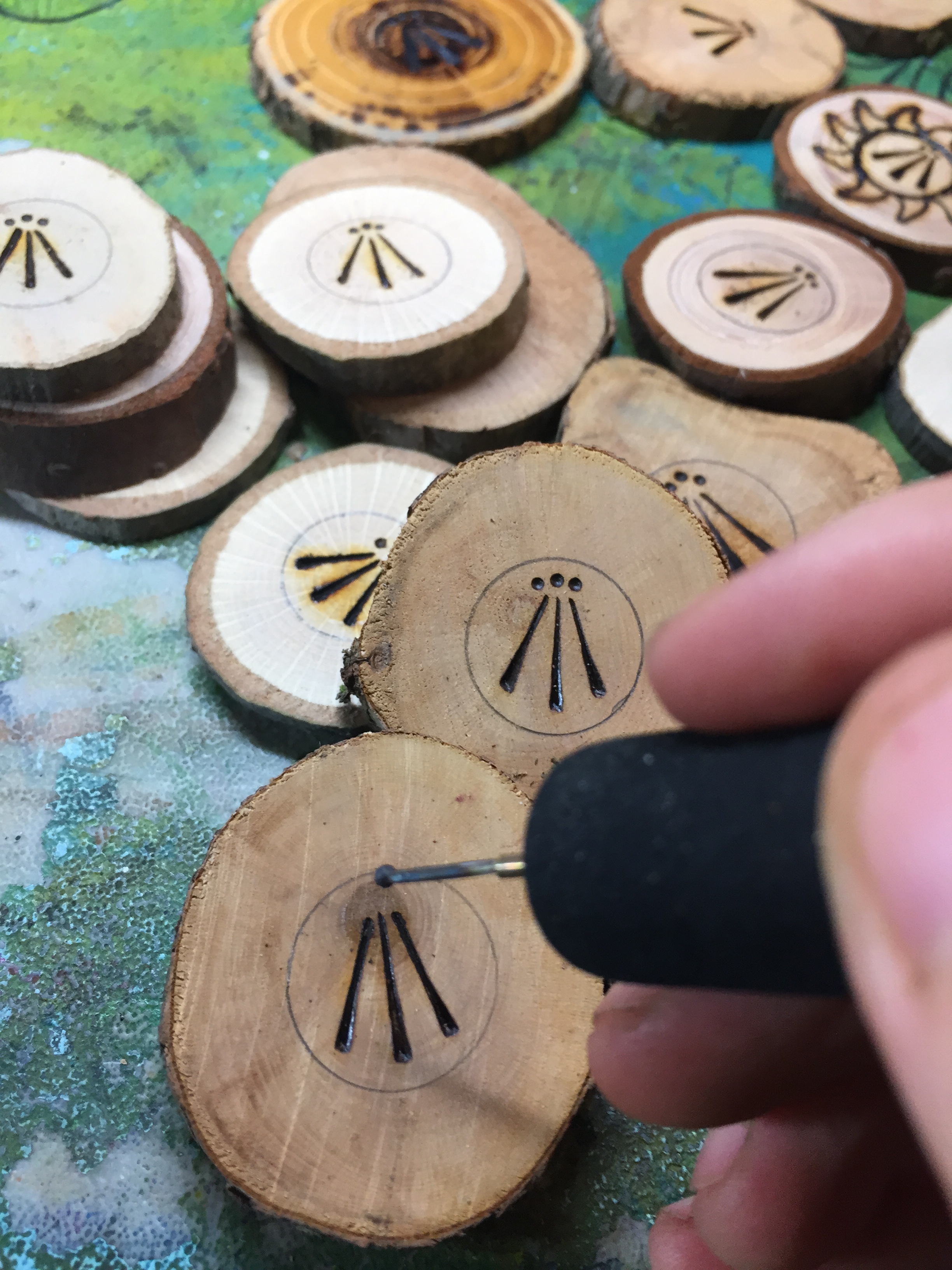
Rhododendrons to provide two important ecological functions: because of where they grow, their deep roots perform excellent soil and erosion control. Because they have large leaves that are evergreen, they also provide excellent shelter–particularly winter shelter–to a host of birds and small mammals.
The rhododendrons also grow in a very whimsical way–they grow twisted, branches coming out at odd angles, and sometimes growing down and back up again. I have long been a whimsical nature artist, and their whimsical, twisted, spiraling branches and trunks have always been an inspiration for me for my own work.
Uses
The Rhododendron, as an understory species, does not grow particularly large and thus, has limited use as a wood product. In fact, none of the books and resources that I currently use to research this series, none covered Rhododendron.
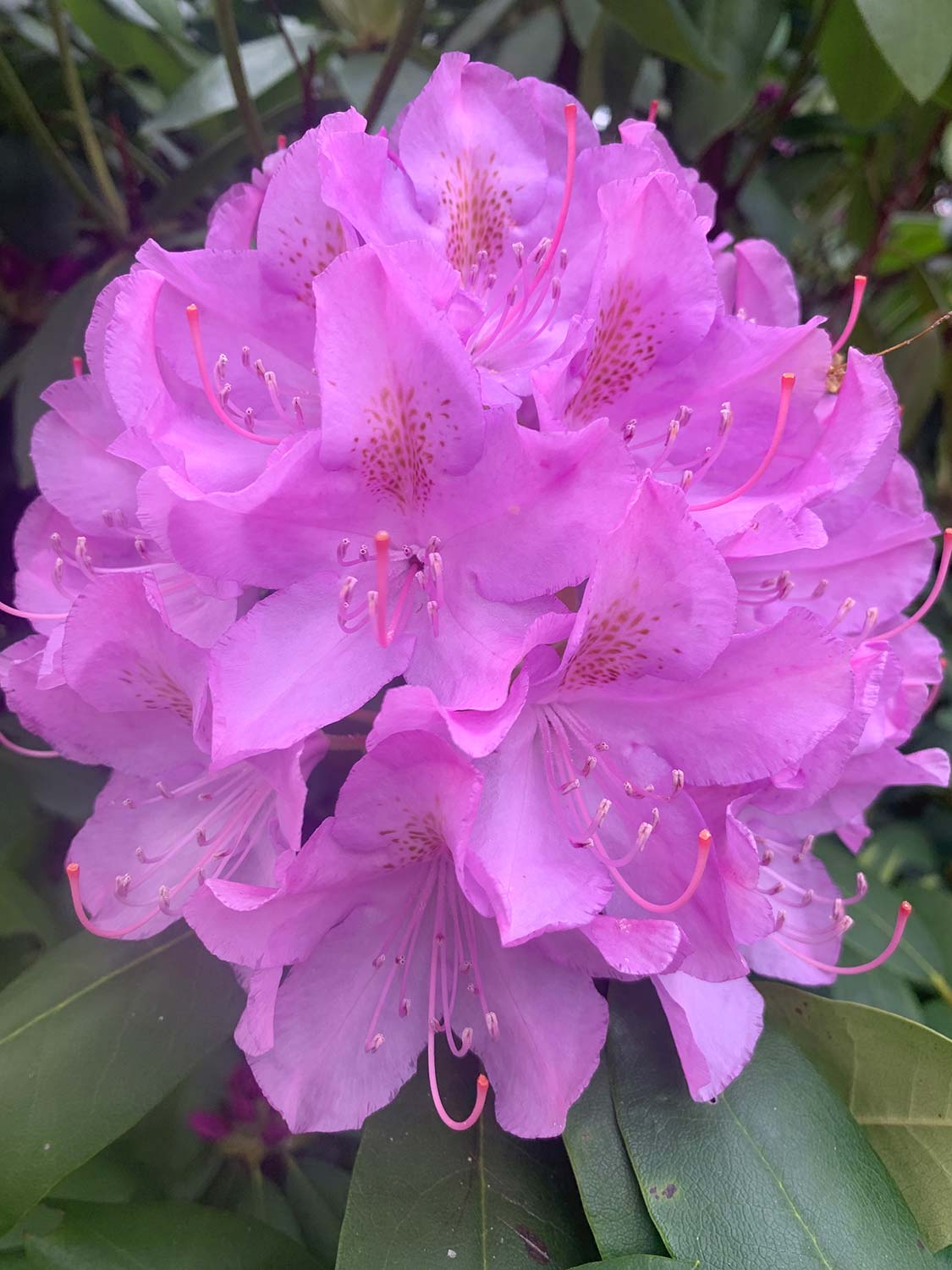
And yet, as someone who has worked with this wood, both to carve and burn, I am delighted to say that it is a wonderful wood. I seek it out for my artwork because it is just perfect–not as hard to work as oak or hickory, it has a softness similar to maple or tulip poplar. It has a rosy, soft texture, which is excellent for doing precise woodburning and carving. It has a very consistent light rose color from the thin bark to the core. I like to turn it into wands, staves, and most especially, create necklaces from slices. When I am kayaking out here on local streams and lakes, I look for recently dead rhododendron pieces for this work.
In the woodworking community, you’ll find other people posting about their experience in using it for wood carving, woodturning, and other fine wood products. One of the features of this wood that is often lauded is that it rarely cracks as it dries. The bushcraft community also uses this to make very fine charcoals for a variety of purposes. One of my future plans is to make charcoal and see how it works for art–my choice has been grapevine or willow for a number of years, but I suspect this may also work great.
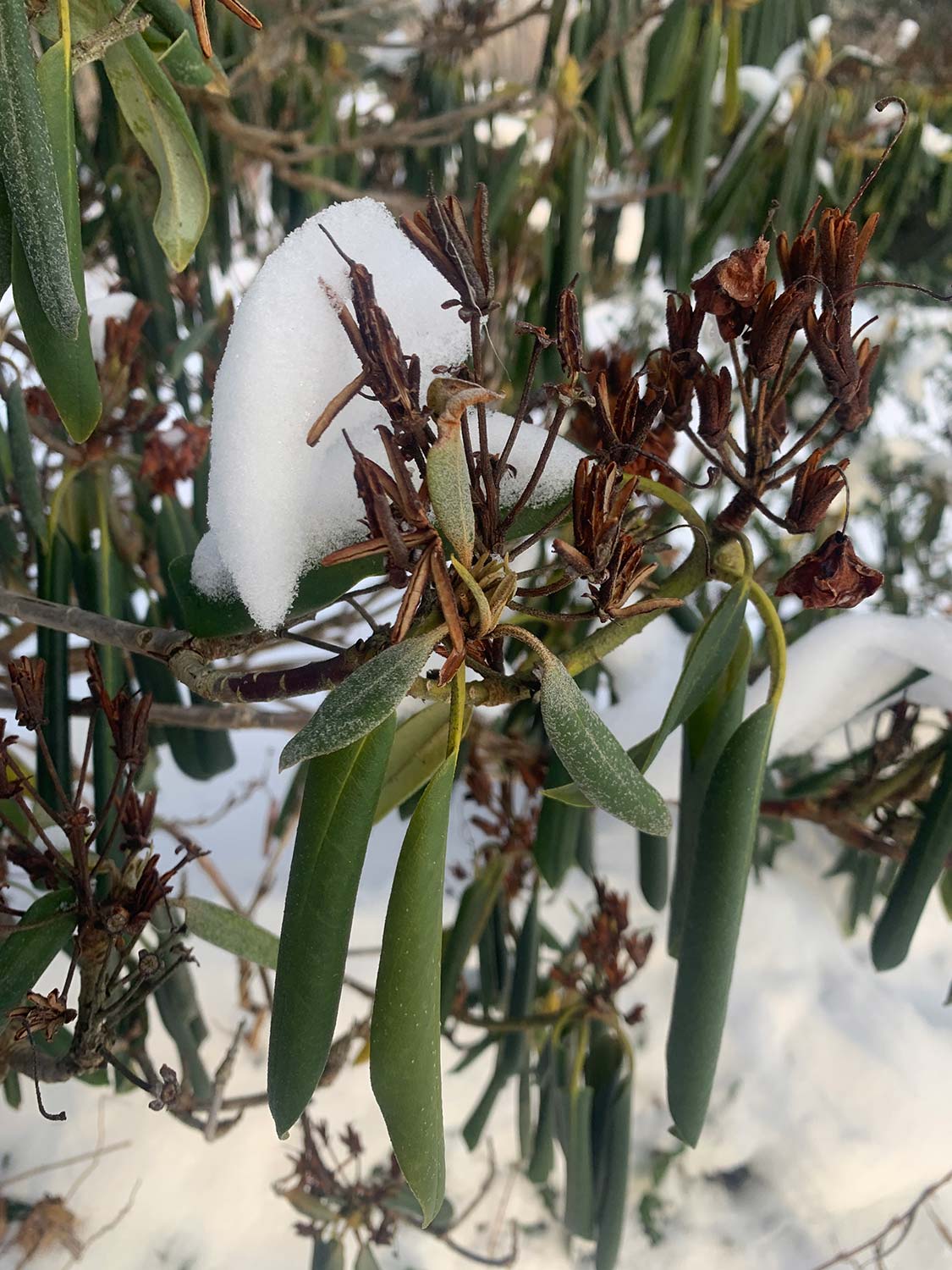
One of the big debates about using Rhododendron is that the leaves and flowers contain grayanotoxin, which can be fatal if ingested. All evidence suggests that while the greenwood is toxic, the dried wood is fine to burn and to use (here is one such analysis). If you are going to do woodburnings or anything else, because of the plant’s toxicity, I do suggest that you invest in a soldering smoke absorber–these are very inexpensive and can filter out any smoke you may have concerns about.
Beyond the wood, I am unaware of any other uses. This is in part because Rhododendron (along with Azelela and Mountain Laurel) is poisonous, and thus, they do not have any herbal uses. When a plant does not have herbal uses, I have found it also often does not have magical ones, at least recorded ones. I have not found any lore or stories associated with this species, despite its critical importance and dominance in the ecosystem.
Divination and Meanings
Like some of my other overlooked understory plants, there isn’t a lot to go on without any magical or folklore traditions surrounding Rhododendron. Despite this, the ecological aspects themselves offer us some key insights. In particular, I think Rhododendron teaches us lessons about how to thrive in adversity and how to make the most of more difficult situations. While these are lessons that are always appropriate, they are particularly useful now.
Adaptability and Opportunity. As I recently wrote, there is a wide range of plants that thrive in the understory and that thrive in the cold and dark months when the overstory is bare. Rhododendron is one of these plants, demonstrating adaptability, resilience, and opportunity. Rhododendron offers a clear message: in times of dark and cold, find a way to grow, to thrive, and to make lemonade from lemons!
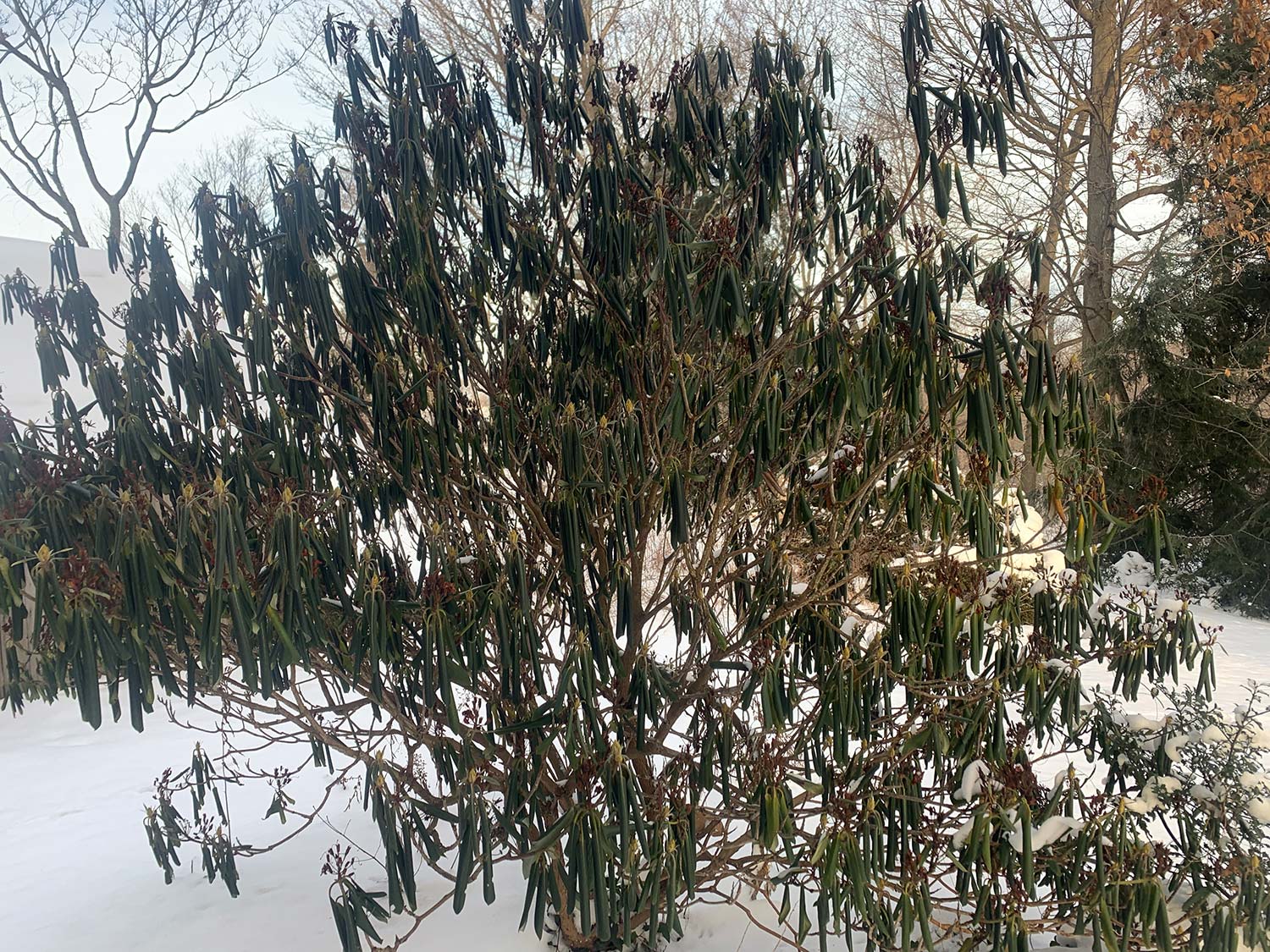
Sheltering in the extremes. The winter leaf foliage of Rhododendron takes the opportunity to spread wide when the warmer winter temperatures are present. However, when the temperatures go freezing, Rhododendron drops her leaves and curls the leaves up tightly to prevent frost damage. This adaptability, combined with shelter, is a powerful healing message. There are times we need to shelter, but we should only do so when the conditions warrant it. After a blast of sub-arctic cold and wind, it is ok to curl up tightly. The key is to remember to uncurl when the situation changes.
Growing your own way. Rhododendron is unlike anything else in the ecosystem here in Pennsylvania. It teaches us the power of individuality and growing in whatever whimsical and beautiful way you want. Rhododendron reminds us to be whoever we want to be. And we can do that regardless of the circumstances that are affecting the outside world. What a powerful and potent lesson for 2020 and beyond!
Dear readers, do you have experiences with rhododendron? If so, are you willing to share? I’d love to hear your thoughts! Blessings!


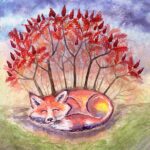
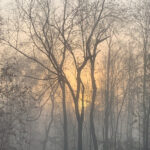
Reblogged this on Paths I Walk.
Reblogged this on Good Witches Homestead.
My family has always had Rhododenrum growing near our homes. They especially grew well on Cape Cod. Now living in the White Mountains of NH, we have two planted near our front door. One is a lighter color than the other. What we love most about them is that they attract both bees and hummingbirds. We have hummingbirds dropping by all summer. On more than one occasion, we have had hummingbirds fly right into our house, then fly back out as if to say thank you for having a natural source of nectar. On a couple of trips to NC, we were amazed at the amount of Rhododenrums growing as an understory in the forests.
Yes! It’s interesting to see them in their native habitat in the mountains if you are used to seeing them only as an ornamental :).
“Native” to New England or not?
“Medfield Rhododendrons is the site of an important and rare stand of Rhododendron maximum, the great laurel or rosebay rhododendron, one of only three species of evergreen rhododendrons native to eastern North America. Rosebay rhododendrons are most abundant in the southern Appalachian Mountains, where they form extensive thickets. In New England they reach their northernmost range. At the turn of the 20th century, this plant became popular for its showy flowers and over-collecting in the wild nearly wiped out the species. Only seven known populations exist today, including this one, the largest and easternmost population of rosebay rhododendrons in Massachusetts. Please help protect this fragile site.”
This is from the Trustees of Reservations website. It seems only barely believable to me that a forest plant that is this big and hard to dig would be wiped out so easily. Maybe it wasn’t established at all previous to European settlement? The town was settled in 1649. Just wondering.
Hi Bill, never underestimate the power of determined humans to wipe out huge populations of plants. We’ve seen that with so many woodland medicinal species like American Ginseng and Black Cohosh. I am not at all surprised that people dug them out of the woods for ornamentals. They also like certain acidic soil, so that may also contribute to how few you see now.
Well, I wonder if this rhododendron can be used as incense? Has it resinous buds? Especially in Nepal, they use rhododendron as herbal medicine and for incense making. Here in Europe, the scent of the alpine rhododendron is very warm. Further, there are species used as famous tea in Russia and not to forget the “Labrador Tea”, former Ledum groenlandicum, in newer days Rhododendron groenlandicum from North America. I know you are focused on your native plants and ecosystem, but what I want to say with these examples is that there might be more to discover…
Hi Caroline, that’s a good question. Since they are known to be toxic, I would think you probably wouldn’t want to use them indoors…but the buds do have a very sticky quality. It is certainly worth exploring….
Oh what a great way to interpret the meaning of Rhododendron! They DO have such unique ways of growing that trimming one takes equal creativity ! They grow prolifically here in the pacific NW, and I have a lovely pink one in the backyard. Hoping it’ll grow tall enough to cover the view the nasty, rusted, dirty, free-standing basketball hoop in the neighbor’s yard. LOL
Haha, yes! Trimming requires some creativity. Ours here grow pretty wild and we love them :). Thanks for the comment!
I’ve found them to be very generous, helpful plants. When climbing and hiking, and I come to a steep scramble, there’s often a rhody right there to offer me a hand up!
Beautiful. Thank you for sharing. I feel like sometimes I forget that the world between the tall trees and the ground plants is the middle story. This is a beautiful guide and remembrance to connect deeper with this plant.
Hi Diana, yes! If you take a look at the blog post I just posted for today, I actually expound upon this idea further :). Blessings and thank you for reading!
So interesting!
I fell in love with rhodies when I moved from Ohio to Oregon in 2000. They’re just so gorgeous, strong and (I thought) indestructible. Alas, since about 2010 or so, we’ve been dealing with a terrible pest called “azalea lace bug.” It’s decimating the rhododendron/azalea population; I sure hope you guys never get it!
Corrie, oh no! I haven’t heard of Azalea lace bug….I’m sorry that you have to deal with that. So far, our rhododendrons are strong!
I absolutely love my pink rhododendron next to my front porch. It is one of my top favorite plants. It’s gorgeous gigantic blooms in the spring make me so happy and my house look so pretty.
Awesome! It sounds like a realy wonderful tree :).
I love your discussion of the medicinal, magical, and ecological roles of so many plants and trees that grow in our area but were not included in traditional European folklore! I really appreciate your work! For another perspective on rhododendron, I suggest looking into “mad honey”. Here’s a couple links:
https://www.atlasobscura.com/foods/mad-honey-red-hallucinogen
https://theapiarist.org/mad-honey/
And Leslie Fish has a fun song called “Rhododendron Honey” about an independent town that “fought off” the strongmen who wanted to be in charge by feasting them on rhododendron honey and amanita stew
Hi Prose, thanks for sharing this info! I had not heard of “mad honey” before and that’s pretty fascinating. I don’t think that happens with the rhododendron species we have here, but it is cool to know it does happen. There are other weird things that can go on with honey though, even out here… :).